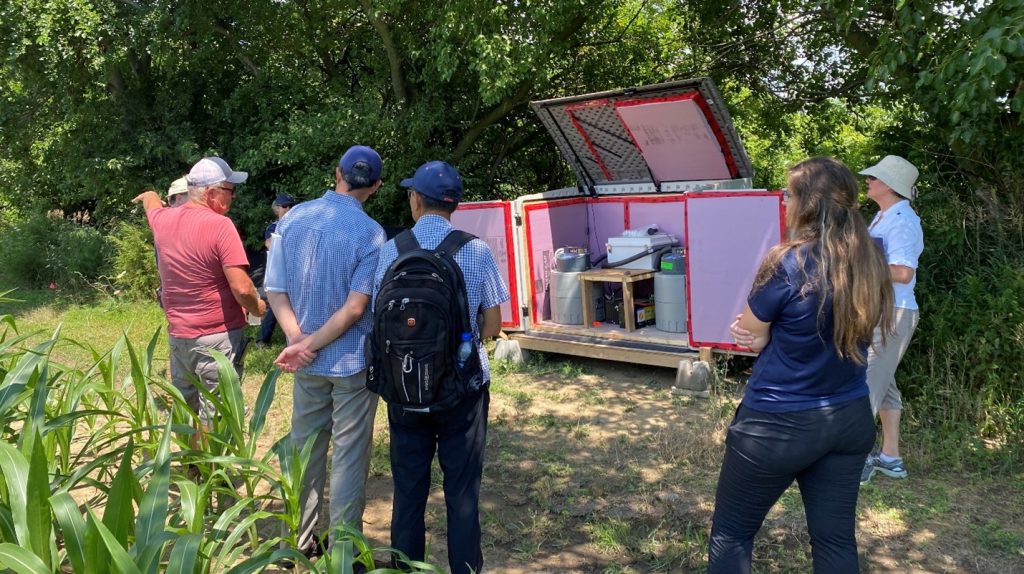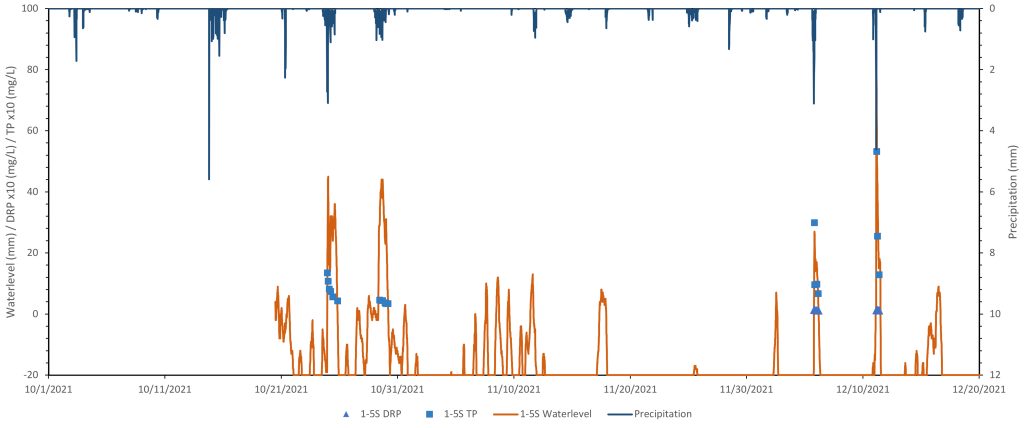By Tracey Ryan, OSCIA Applied Research Coordinator
If you ask Henry Denotter why he uses no-till and cover crops like buckwheat, he will tell you “It’s all about the water.” For more than 30 years, Henry has been perfecting farming practices that keep inputs and soil on the land where they can grow crops, and out of the water, where they cause pollution. Henry figures it does not make financial or environmental sense to have nutrients and soil leaving the field.
Henry farms north of Kingsville, ON, in southern Essex County with his family. Together he and his son, Jeremy, farm 1,500 acres growing corn, soybeans, wheat, and cover crops on primarily Brookston clay. They are always looking for ways to improve soil health and reduce the impact of their practices on the environment and water quality, while improving the financial sustainability of the operation.
Henry believes that taking care of the land and water is an investment. He is always looking for ways to reduce his impact on water quality and improve his farm productivity. He figures that farming on heavy clay soils has made this necessary. When clay is wet, pore space reduces, and it becomes practically impervious to water and air. As it dries it can become dense and hard. Compaction, runoff, ponding, and erosion are the reasons that Henry began his no-till and conservation farming over 30 years ago.
The goal for Henry and Jeremy is to have less tillage, controlled traffic, targeted fertility, and more cover crops. No-till corn and soybeans are planted in 20-inch rows. The system relies on multi-functional equipment and maintaining straight lines. In addition to reducing tillage, they have added cover crops into their corn-soybean- wheat rotation.
Buckwheat has been added to the rotation as a fourth crop. Buckwheat is a fast-growing annual that has a long flowering period and reaches maturity quickly. Henry is quick to point out that a flowering buckwheat field is a good public relations tool as well as a pollinator habitat. Buckwheat roots also help improve soil structure. In addition to these benefits, buckwheat has the added value of being a marketable crop with increasing opportunities.
Henry believes you need data to back up observations. As an Ontario Soil and Crop Improvement Association member, he has participated in many farm trials and research projects. Henry is one of six farm cooperators in the Living Lab – Ontario project. Through this project, Agriculture and Agri-Food Canada (AAFC) research scientists work directly with producers to find ways to improve soil health and reduce erosion and nutrient runoff through innovative practices.
In collaboration with Henry, AAFC Water Management Engineers Patrick Handyside and Sonja Fransen installed edge-of-field stations to monitor surface runoff and tile discharge. The monitoring stations are located on three different fields under a corn-soybean-winter wheat crop rotation. Data collection began in October 2021. The data being collected at each location includes the level of surface and tile water at each of the field outlets, weather data and nutrient levels leaving the field through surface and tile runoff.

Water monitoring stations instrumentation to trigger sampling during rain and runoff events.
The monitoring stations are designed to collect water samples from field and tile runoff that results from precipitation events. During a precipitation event, a rise in water levels can be observed, which in turn triggers the equipment to take a series of water samples for the event. It has been observed that tile flow occurs for a longer period of time after a precipitation event compared to a “flashy” or quicker event that is observed in the surface flow. The water level data is used to generate a discharge hydrograph of the event which is used to select which bottles will be sent to the laboratory for nutrient and sediment analysis. The key points include the start of a discharge event, the peak of the event, as well as the tail end of the event. These values are plotted against the water level to show the trend of the nutrient concentrations observed over the event.
Data from these fields are helping both scientists and producers better understand water flow from the fields at different times of the year, between surface runoff and tile drains, and how this changes depending on which crop is growing. Water flow determines the pathway for nutrients leaving the field (surface versus subsurface). The research will improve the understanding of surface and subsurface water pathways to improve recommendations for the most appropriate beneficial management practices that limit nutrient loss.
Figure 1 (pg. 3) shows how tile flow continues long after the rain event has stopped. Concentrations of total phosphorus (TP) and dissolved reactive phosphorus (DRP) increase significantly as the intensity of an event increases and then declines. Figure 2 (pg. 3) shows that surface runoff events can be infrequent, but “flashy” in their intensity. TP and DRP concentrations can be higher due to the higher sediment load carried by a surface runoff event. (Click on graphs below for larger image)

Figure 1: Impact of precipitation on water levels, phosphorus concentrations in tile Flow for October to December 2021.

Figure 2: Impact of precipitation on surface water runoff and phosphorus concentration for October to December 2021.